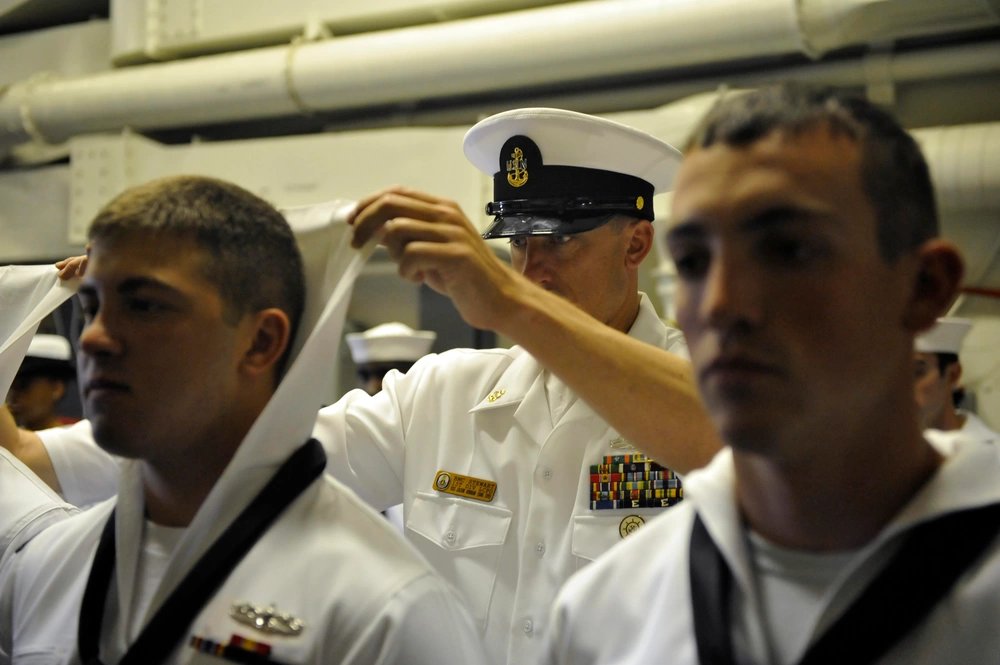

It’s no surprise that the military has its own set of standards for its soldiers. Everything from behavior to haircuts, to training, to how soldiers dress falls under strict regulation. Violations are handed out and for good reason. Uniform guidelines are a big part of the military remaining in unison and keeping them at the highest level of efficiency and function at all times. While a wardrobe issue may not sound like a big deal, it’s a good practice to keep everything in check. That way soldiers are used to a specific set of standards.
Besides, there’s more to it than that. Uniform standards come from a long set of traditions. Each branch has its own rules that maintain a professional look, maintain camaraderie among its members, and provides a respectable-looking attitude at all times. This dates back to the dawn of the United States military. Once uniform standards were put into place, they were away, not only to ensure who was fighting on the same side but to perform better as a unit. Look well, feel well, do well.
Take a look at these important uniform guidelines, as well as where to find any changes, within the military.
Military branches and their uniforms
First things first, it’s worth noting that each branch has its own uniforms. And some branches have different uniforms for each rank. For instance, Air Force members may change the color of the jumpsuit they wear once promoting. In contrast, Army soldiers all wear the same uniform and differ themselves only by rank insignia.
Uniform guidelines are particular and soldiers are expected to learn these rules in basic training, or in their first months as a soldier. Usually, higher-ranking members will help out new soldiers to learn the rules.
Guidelines are also subject to change. Or, certain bases may call for different uniforms. For instance, various PT outfits by weather. Or military bases in warmer climates that call for sleeves to be rolled to elbows, etc.
Different occasions call for different uniforms
As mentioned, units will have their own uniforms for PT, or physical training activities. Each base or even battalion may have its own uniform. Daily wear is then worn in most day-to-day operations, while dress uniforms are saved for special occasions. The latter also comes with its own headgear, shoes, belts, or any other finishing touches. Dress uniforms often display ribbons or medals and are expected to be extremely crisp and clean. They can be expensive to purchase and/or maintain.
Latest uniform guidelines
Army: In 2018, the Army announced it would be releasing a new uniform, nicknamed “pinks and greens.” The uniform is a throwback, honoring a similar style worn during WWII. Additional guidelines for soldiers and their uniforms can be found here.
Navy: The Navy released new uniform guidelines at the end of 2021. Guidelines for wearing under layers and outer gear alike can be found here.
Air Force: The Air Force updated their OCP uniforms and respective guidelines in 2019. Find out more about how they’re worn and any exceptions here.
Coast Guard: The latest uniform updates to the Coast Guard’s uniform was made in 2020. Learn more about their specifics here.
Marines: Marines continue to wear their cammies and dress blues, depending on occasion. Learn more about the requirements, down to the small details, here.
Space Force: The Space Force recently released its “futuristic-looking” uniforms and are testing the models. They are said to have been designed as an updated version of Air Force garbs.
Personal hygiene and finishing touches
It’s worth noting that uniform standards don’t just stop at the clothing itself. Of course, uniforms are expected to fit properly and to be fastened correctly. Each set may have velcro, buttons, etc. and soldiers are to fasten and tuck at all appropriate points. For instance, many uniforms call for pant legs to be bloused or tucked into boots.
Hair is another focal point. Male soldiers often opt for fade haircuts, as hair must be above the ears, trimmed, and placed neatly under their hat. Female soldiers previously had to have hair that was either above the chin or gelled into a tight bun, but has recently seen relaxed regulations to allow low ponytails. Locs, nail polish, and lipstick are also now permitted. Faces are to be clean-shaven while in uniform or to follow specific rules, such as a mustache that is trimmed at the edges of the lips. Make-up is also permitted, so long as it’s neutral and does not include bold colors.
Military branches are in charge of their own uniform standards, however, in general, they are seen as strict and specific ways of keeping their members looking in a similar fashion. To learn more about a particular branch and what it requires of its outfits, check out respective regulation resources.
